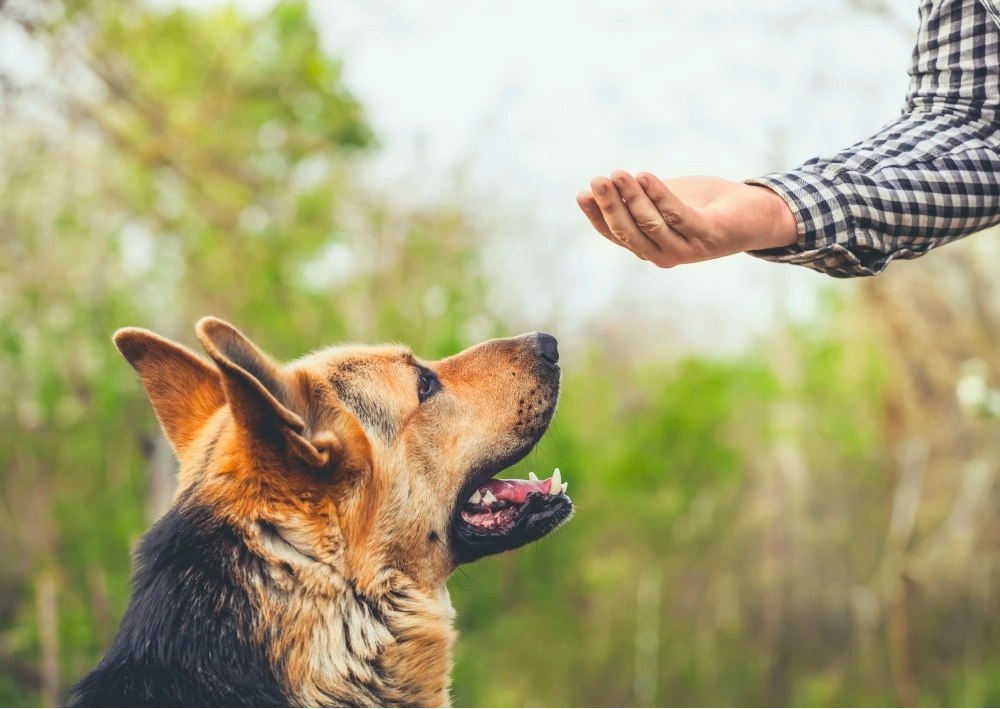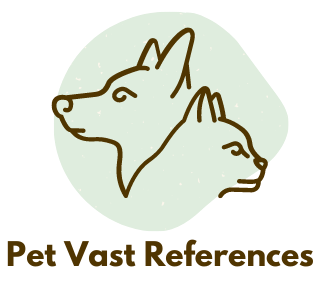Contents
- Reward Based Dog Training Vs Motivational Dog Training
- How to motivate your German Shepherd During Training?
- 1. Using Food as a Reward in Positive Motivation Dog Training Technique
- 2. Using Alluring Toy as Reward in Positive Motivation Dog Training Technique
- 3. Using Lavish Praise as Reward in Positive Motivation Dog Training Technique
- 4. Using Force in Positive Motivation and Corrective Dog Training Technique
One of the undeniable aspects of dog training techniques is motivational dog training. Whether for your German Shepherd Dog or a Chihuahua positive motivation dog training techniques should be adopted by trainers. A handler can only be considered a good trainer if s(he or) has learned the art of using motivation in his/her dog training endeavor.
At the very beginning, it is important to let know that any reward-based dog training techniques cannot be considered positive motivation dog training, although both are considered positive dog training methods. Many dog trainers – both freshers and experienced – are found to confuse reward-based training with motivational dog training.
Reward Based Dog Training Vs Motivational Dog Training

Reward-based dog training and motivational dog training are both positive dog training techniques, with very subtle conceptual distinctions – Semantic Deviation. Reward-based dog training techniques are designed to positively reinforce and facilitate the development of the desired behaviors and actions by offering them rewards. Motivational dog training, on the other level, is one of the evolving positive training techniques in which your German Shepherd needs help to perform as desired, and this can be done through effective inputs of all motivational factors that stimulate the dog to learn what is taught.
1. Reward Based Dog Training
Reward-based dog training is a positive training technique where the dog is allowed to succeed, followed by rewarding for successfully performing the desirable action – Positive Reinforcement. A reward-based training method is a form of teaching, which is fundamentally called Classical Conditioning, through which connections are set to form between the event (what the trainer tries to teach while showing the reward – treat) and the subject’s reflexes (involuntary emotional responses in the dog – drooling). The reward is given when the dog does what is desired and is refused to be given when the dog doesn’t do what he is required.
2. Motivational Dog Training
Positive motivation dog training techniques involve creating the friendliest environment for your dog. This environmental engineering to optimize your dog’s performance level is aimed towards helping your dog to get rid of all fears and shyness and gain confidence, which helps him to effectively try to understand what his handler wants from him.
How to motivate your German Shepherd During Training?
The challenge lies in setting up the methods of motivating the dog to learn new tricks. The first step to creating a motivational environment for the dog is helping him to:
A. Trust his trainer (building trustworthiness)
B. Get rid of fear (strengthening nerves)
C. Gain confidence in every experience related to training (diminishing shyness and gaining mental strength)
D. Choosing a place that the dog likes (a zone friendly to him)
These 5 steps are crucial for effective positive motivation dog training. You absolutely cannot start off with training a dog that doesn’t trust you or that is fearful and shy or that is not confident about his safety. Once your dog is happily confident and trusts you it will become easier to build a strong relationship with him which is again essentially necessary. Remember strong trainer-dog relationship acts as one of the most potential motivating factors for the dog.
Following the above important ways to create a motivating environment for our dog, there is a next set of methods that should be viewed as the connecting steps. Connected to the above factors, the other way to motivate your German Shepherd to learn new tricks is Positively Reinforcing Your German Shepherd To Act Desirably By Rewarding Him, which means motivating him by giving rewards for each of his desirable actions. Here are how you can motivate him:
A. Motivating your shepherd by using food as a reward
B. Motivating your shepherd by using alluring toys as a reward
C. Motivating your shepherd by lavishly praising him as a reward
D. Applying force as corrective dog training techniques – Using force to make the dog do what he is required to do
1. Using Food as a Reward in Positive Motivation Dog Training Technique
Using foods to get things done by dogs is one of the most traditional methods, and has been in practice probably since when man started domesticating dogs – a few thousand years ago. This is hence quite commonly known to any dog owners, and even to those who have never stayed with a dog. What is challenging here is to master the art of presentation and timing of rewarding your dog with his favorite treat when he does what is desired. Remember, the treat is used as a reward to trigger motivation and drive to perform an action when desired. This is an art that gets mastered over time and with experience. The food-based training is considered a successful positive motivation dog training endeavor only when it motivates the dog to perform the desired action, and not just motivates the dog to participate in the training session. If the food motivates the dog just to experience the training session, then the trainer may have applied the process incorrectly, and the dog requires vigorous corrective training.
2. Using Alluring Toy as Reward in Positive Motivation Dog Training Technique
Not all, but a few dogs may refuse treats, and they become tough to be positively motivated by offering food. Alluring toys come to play one of the most important roles here. But if the dog doesn’t have adequate prey drive, which is one of the basic instincts in the German Shepherd breed then even alluring toys don’t work well as a potential reward. Prey Instinct or Booty Drive may be genetically inherited by your German Shepherd. This instinct stimulates the dog to chase a moving object. If this instinct is present in your dog then you can be pretty sure that your dog has the ability for Schutzhund protection work. Prey drive in German Shepherds starts becoming prominent as the puppy reaches 6 to 7 weeks of age. The trainer can enhance the spontaneous quality of Prey Drive starting from the age of 8 -9 weeks. If a puppy is born with Prey Drive, it is important to strengthen it through optimal practice and drive-building exercise, else the drive will be naturally diminished. Most dogs naturally lack extreme Prey Drive, but many of them will have it to an adequate degree so as to put this instinct effectively to motivate it in the training as a reward.
3. Using Lavish Praise as Reward in Positive Motivation Dog Training Technique
When you are training your German Shepherd for a new trick make sure you always praise lavishly for any good job done. Handler’s praise is crucial as a motivation factor in positive dog training techniques. However, praise doesn’t work alone. It needs to be combined with other factors of motivation – like food and prey factors (toy). Another significant component for “praise” to work well is a strong and positive relationship between the dog with his handler. Without good dog-handler bonding praise will turn out to be a big flop. Building a relationship is a time-consuming process. And building a relationship that will be fruitful for “positive motivation dog training” is more challenging as it is required to be supported by trust and leadership (Alpha Membership); hence for “praise” to work really effectively as a motivational reward is not something that can happen within a fortnight. Establishing alpha leadership in the pack is an art and requires an understanding of your dog’s psychology.
4. Using Force in Positive Motivation and Corrective Dog Training Technique
‘Force’, which may sound weirdly awkward when it comes to dog training, is something that should be a part of positive dog training techniques, as long as ‘force’ doesn’t become abusive. Corrective dog training techniques require the handler to allow the dog to do mistakes by its natural instinct and then correct it by firm handling.
However, applying force and being firm to a dog that is under a rigorous training session sounds easy, but unfortunately, it’s not. The challenge lies in understanding how much force to be applied and in what situations may be dog be forced to do what is desired. Many so-called professional dog trainers have been noticed to have applied force even to a degree that compromised the relationship. Such ‘force’ contributes to the decline in the dog’s confidence and trust in the handler, accompanied by an increase in the degree of shyness, which merge together to end up with all trash, making the dog even harder to be trained.
While using any of these rewards as motivational dog training techniques do not forget to counter-conditioning the related behavioral issues. Subtle behavioral issues linked to good work done may be enhanced to a bigger shape if rewards are given without conditioning the issues. Your German Shepherd may be intelligent but he doesn’t know that he is being rewarded only for the good work minus the behavioral issues.
The motivational dog training method requires the handlers to communicate with their dogs in a prominent, positive clear, and compelling way. It is hence most important to establish a strong bonding between the handler and the dog. A strong positive relationship with the dog, building trustworthiness, strengthening nerves, and helping the dog to gain confidence is the foundation of positive motivation dog training.

 How to Become A Professional Dog Trainer: 8 Simple Steps to Take
How to Become A Professional Dog Trainer: 8 Simple Steps to Take